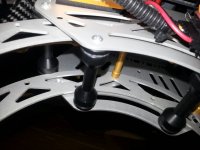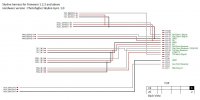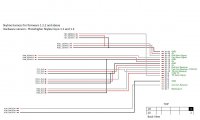nicwilke
Active Member
Mine works well with position gains in 80 to 120 range and velocity gains in the 60 to 80 range. I'd have to connect to verify but I think right now the tilt position is around 90 and roll 110 with tilt velocity at 60 and roll velocity at 70 or 80. Pan is not in use and the integrals are all at zero.
Two things I found that make a really big difference, make sure both tilt and roll motion is smooth and even across the entire range of travel, and do whatever it takes to get the camera perfectly balanced on the platform. I disconnected the tilt belt and lowered the roll cradle so the roll servo gear wasn't making contact and the entire assembly was free to move on its own, with the camera mounted it's pretty easy to see what direction things are light vs. heavy. I found with the Nex 5N I had to add weight to platform opposite the tilt servo to get it to balance. The combination of the tilt servo weight and the offset lens on the Nex plus the roll cradle and platform on the AV130 not being big enough to be able to move the Nex around very much made it impossible to balance without adding some ballast. Once I did that things started working a LOT better...
Ken
P.S. do Autotune after getting the balance right and with the camera mounted on the platform.
Thanks for the tips.
I've done very similar, and found last night the roll cage was a little on the sloppy side. I loosened the bottom guide pulleys, and pushed them closer to the roll rail and tightened them up. Now it's reduced the deadband slop. Preliminary testing showed a massive increase in smoothness. The servo is not struggling, that's the sweet spot. Can't be too loose, can't be too tight.



